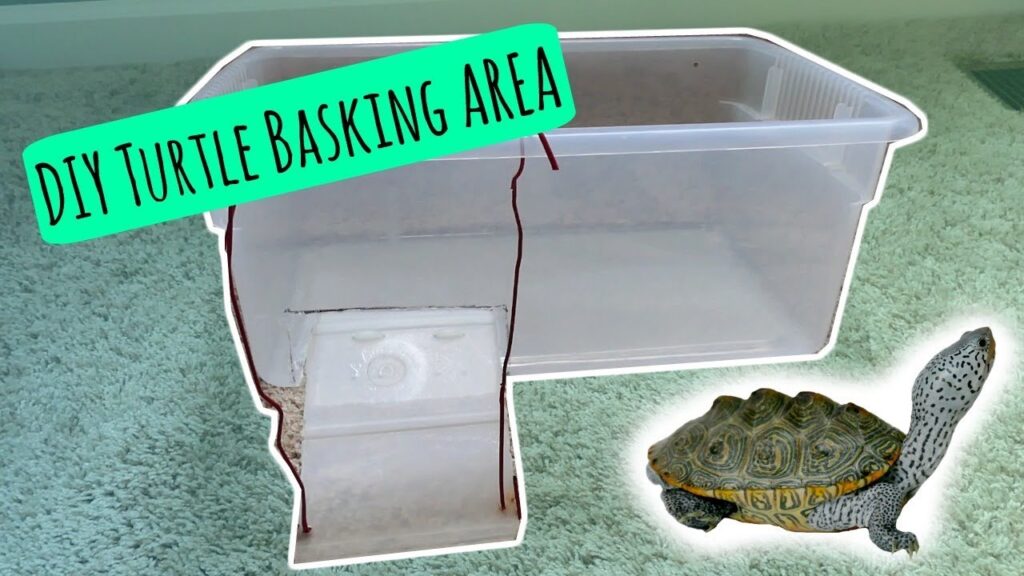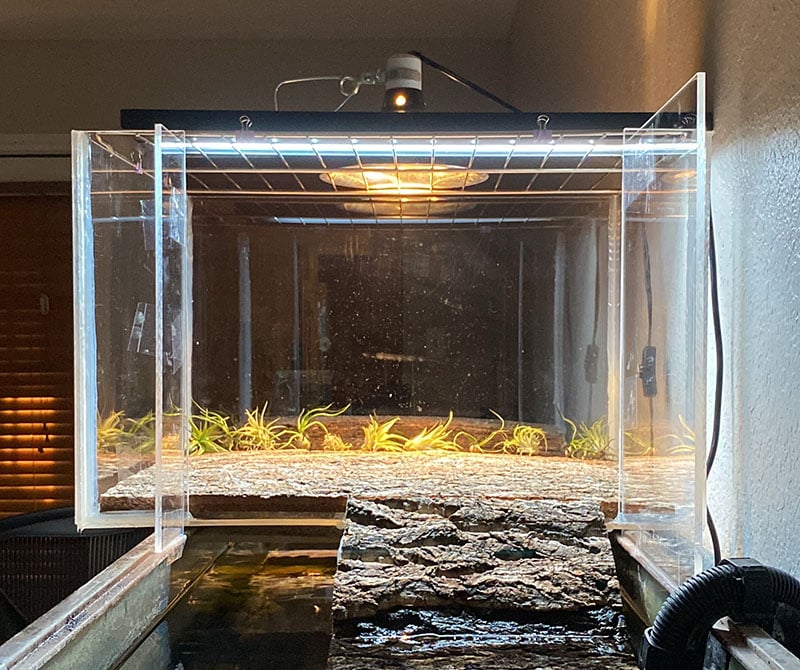So you’ve decided to add a turtle to your family? That’s great! Turtles make fascinating pets, but they have specific needs to ensure their health and happiness. One crucial element is providing them with a comfortable and secure basking spot. In this article, we’ll share some practical tips on how to create the perfect haven for your turtle to relax, bask, and soak up some Vitamin D. From choosing the right basking materials to controlling the temperature, we’ve got you covered. Get ready to create a basking spot that your turtle will love to call home!
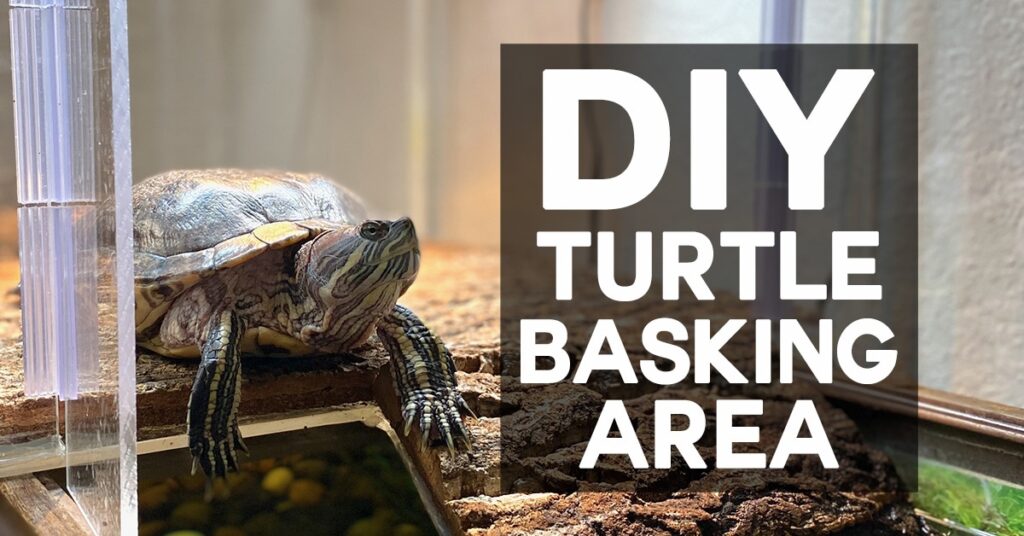
Choosing the Right Equipment
When it comes to choosing the right equipment for your turtle’s basking spot, there are a few key factors to consider. First and foremost, you’ll want to select the right basking platform. This is where your turtle will spend a significant amount of time out of the water, so it’s important to choose one that is appropriate for their size and species. Look for a platform that provides enough space for your turtle to fully stretch out and bask comfortably.
In addition to the basking platform, you’ll also need to choose the correct heat source. Turtles require a basking spot that mimics the warmth of the sun, so a heat lamp or ceramic heat emitter is essential. It’s important to carefully select the appropriate wattage for your setup to ensure that the basking spot reaches the ideal temperature for your turtle.
Lastly, including a UVB light is crucial for your turtle’s overall health. UVB light is necessary for turtles to metabolize calcium, which is essential for strong and healthy shells. Look for a UVB light that is specifically designed for reptiles and make sure to replace it regularly to ensure your turtle is receiving adequate UVB exposure.
Setting Up the Basking Spot
Once you have the necessary equipment, it’s time to set up the basking spot for your turtle. Finding the ideal location is key. You’ll want to choose a spot in your turtle’s enclosure that receives ample natural sunlight, but also provides some shade to prevent overheating. It’s important to strike a balance in order to give your turtle the opportunity to regulate their body temperature.
When setting up the basking spot, be sure to provide a secure enclosure to prevent any accidents or injuries. Turtles are curious creatures and may try to explore beyond their designated basking area. Use barriers such as rocks or plant decorations to create boundaries and ensure your turtle stays safe.
Additionally, creating a non-slip surface for your turtle’s basking spot is important to prevent any injuries. Turtles have strong claws that may cause them to slip, so adding some texture to the surface, such as gravel or a reptile mat, can provide better traction and stability.
Maintaining Optimal Temperature
Maintaining the proper temperature in your turtle’s basking spot is crucial for their health and well-being. Regularly monitoring the temperature is essential to ensure it stays within the appropriate range. Using a digital thermometer allows you to easily keep track of the temperature and make adjustments as needed.
To ensure that the temperature remains steady, it’s recommended to use thermostats with your heat sources. Thermostats help regulate the heat output and prevent any sudden temperature fluctuations, which can be harmful to your turtle. This also helps prevent the risk of overheating and potential burns.
If you find that the basking spot is either too hot or too cool, adjusting the heat source can help maintain the optimal temperature. For instance, if the spot is too hot, you can raise the heat lamp further away from the platform or decrease the wattage. Conversely, if the spot is too cool, you can lower the heat lamp or increase the wattage.
Maintaining Water Quality
Even though turtles spend a significant amount of time basking, it’s important to ensure that their aquatic habitat is clean and safe. Using a filtration system in your turtle’s enclosure is key to maintaining water quality. Filtration systems help remove debris, waste, and harmful chemicals, keeping the water clean and minimizing the risk of bacterial growth.
Regular water changes are also necessary to maintain optimal water quality. Depending on the size of your turtle and the enclosure, you may need to change the water at least once a week. This helps remove any waste or excess food that could lead to the deterioration of water quality.
Controlling water temperature is another vital aspect of maintaining a healthy aquatic environment for your turtle. Turtles require water that is both warm and clean. Use a heater or a combination of heaters and thermometers to regulate the water temperature and ensure it stays within the appropriate range for your specific turtle species.
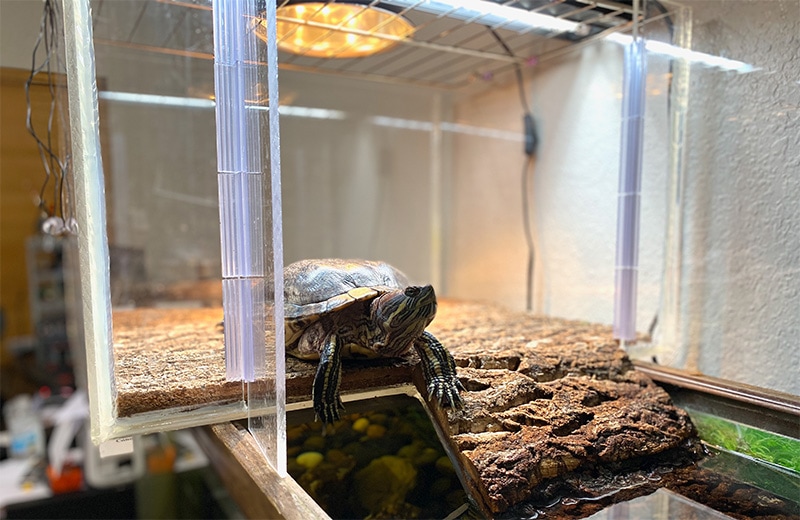
Creating a Natural Environment
In addition to providing a comfortable basking spot, it’s important to create a natural environment that mimics your turtle’s natural habitat. Adding live or artificial plants, as well as decorations such as rocks, logs, and branches, can help create a more realistic and engaging enclosure for your turtle.
Adding plants not only enhances the aesthetic appeal of the habitat but also provides shelter and hiding spots for your turtle. This helps alleviate stress and provides a sense of security for your pet. Just be sure to choose plants that are non-toxic to turtles and can withstand the aquatic environment.
Creating a hiding spot is also important to give your turtle a place to retreat and rest. You can use caves or hollow logs to create a cozy hiding spot. This allows your turtle to feel safe and secure, especially when they want to retreat from any potential stressors in their environment.
To further simulate a natural habitat for your turtle, consider incorporating underwater features such as rocks or platforms for them to explore and interact with. This helps stimulate their natural behaviors and keeps them active and engaged within their enclosure.
Ensuring Safety
Safety should be a top priority when it comes to basking spots for turtles. To ensure the basking spot is secure, make sure it is stable and won’t easily shift or collapse under your turtle’s weight. A wobbly or unstable basking area can lead to injuries or accidents.
Remove any sharp or hazardous objects from the basking area. Turtles are curious creatures and may try to investigate or chew on objects within their enclosure. Remove any small items that could present a choking hazard or be harmful if ingested.
Preventing escapes is also essential in maintaining safety for your turtle. Turtles are known for their ability to be clever escape artists, so it’s important to make sure there are no openings or gaps in the enclosure that they can squeeze through. Secure lids or screens are key to preventing your turtle from making a daring escape.
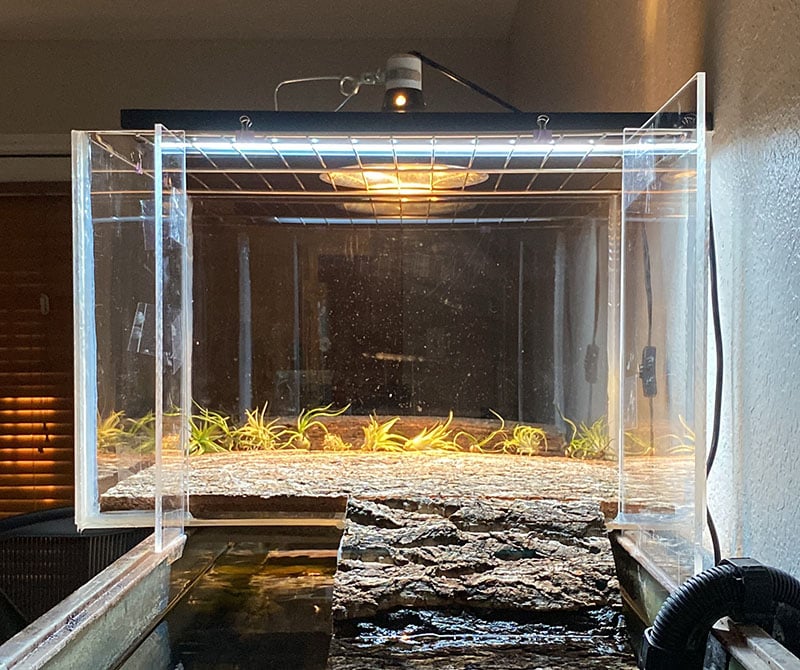
Feeding and Hydration
Feeding your turtle a balanced diet is crucial for their overall health and well-being. Provide a water dish within the enclosure to ensure that your turtle has constant access to fresh and clean water for both hydration and bathing. This helps your turtle stay properly hydrated and encourages natural behaviors.
Offering a variety of foods is important to ensure your turtle receives all the necessary nutrients. Turtles have omnivorous diets, so a combination of both animal protein and vegetables should be included in their diet. Research your turtle’s specific dietary requirements based on their species and provide a well-rounded diet accordingly.
Observing your turtle’s eating habits is essential to ensure they are getting the right amount of food. Some turtles may overeat, leading to obesity and health issues, while others may be more picky eaters. Take note of their eating patterns and adjust accordingly to maintain a healthy balance.
Observing Turtle Behavior
Observing your turtle’s behavior is key to understanding their overall health and well-being. Watch for signs of stress, such as excessive hiding, aggression, or changes in appetite. Stress can have negative impacts on your turtle’s health, so it’s important to address any potential stressors and make adjustments as needed.
Monitoring basking time is also important. Turtles require regular basking periods to regulate their body temperature and absorb UVB light. Take note of how much time your turtle spends basking and adjust their basking spot or lighting if necessary. A lack of basking time can have detrimental effects on their health.
Keeping an eye on your turtle’s shell condition is another important aspect of observing behavior. Any signs of shell abnormalities, such as discoloration, softness, or cracks, should be addressed immediately. Shell health is crucial for your turtle’s overall well-being and can indicate underlying health issues.
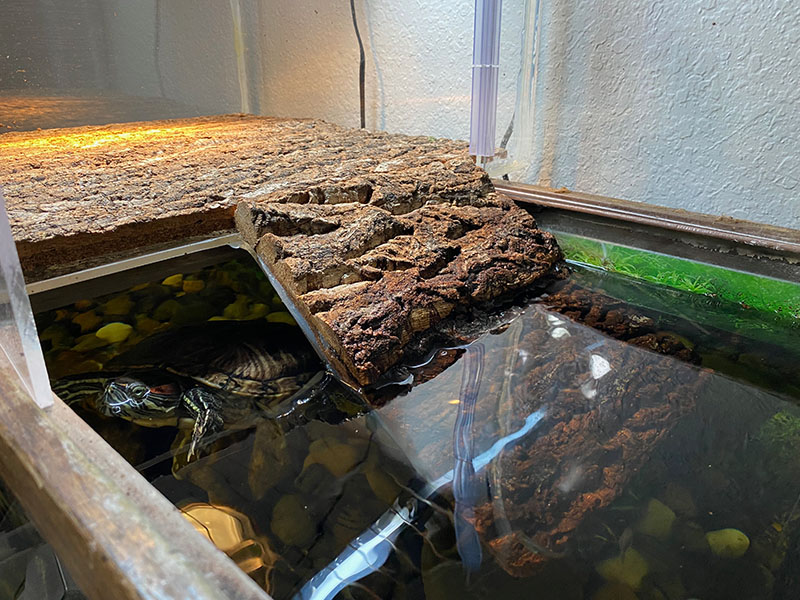
Preventing Health Issues
Ensuring proper intestinal health is crucial for your turtle. Turtles are prone to gastrointestinal issues, such as blockages or infections, so it’s important to provide a varied and balanced diet. Additionally, offering occasional treats like fresh fruits or aquatic plants can help promote healthy digestion.
Preventing overheating and dehydration is also vital for your turtle’s health. Ensure that the temperature in their enclosure stays within the appropriate range and provide access to fresh water at all times. If you notice any signs of overheating or dehydration, such as lethargy or sunken eyes, take immediate action to cool down your turtle and rehydrate them.
Regular veterinary check-ups are essential in preventing and addressing any potential health issues. Find a veterinarian with experience in reptile care and schedule regular check-ups to ensure your turtle is in good health. They can provide guidance and identify any underlying health issues that may not be immediately visible.
Interacting with your Turtle
Interacting with your turtle is not only enjoyable but also helps to build a bond and trust. When handling your turtle, it’s important to approach them with care and ensure you are supporting their body properly. Never grab your turtle by their shell, as this can cause injury or undue stress.
Building trust with your turtle takes time and patience. Allow them to become familiar with your presence by simply being near their enclosure and observing them. Gradually introduce gentle handling and avoid sudden movements or loud noises that may startle them.
Creating a bond with your turtle involves regular interaction and positive reinforcement. Offer treats during feeding time as a way to associate your presence with positive experiences. Always remember to respect their space and individual temperament, as not all turtles enjoy being handled to the same extent.
Building a comfortable and secure basking spot for your turtle requires careful consideration and attention to detail. By choosing the right equipment, providing a suitable environment, maintaining optimal conditions, and ensuring their overall health and well-being, you can create a basking spot that will keep your turtle happy and thriving for years to come.
